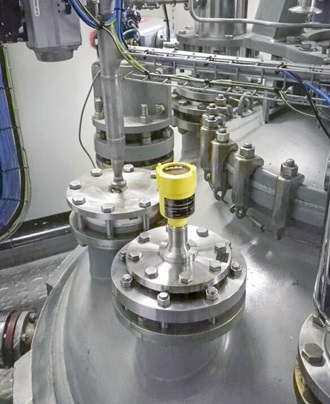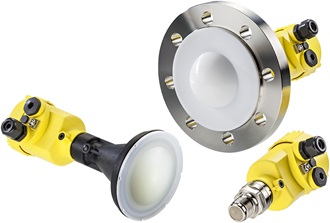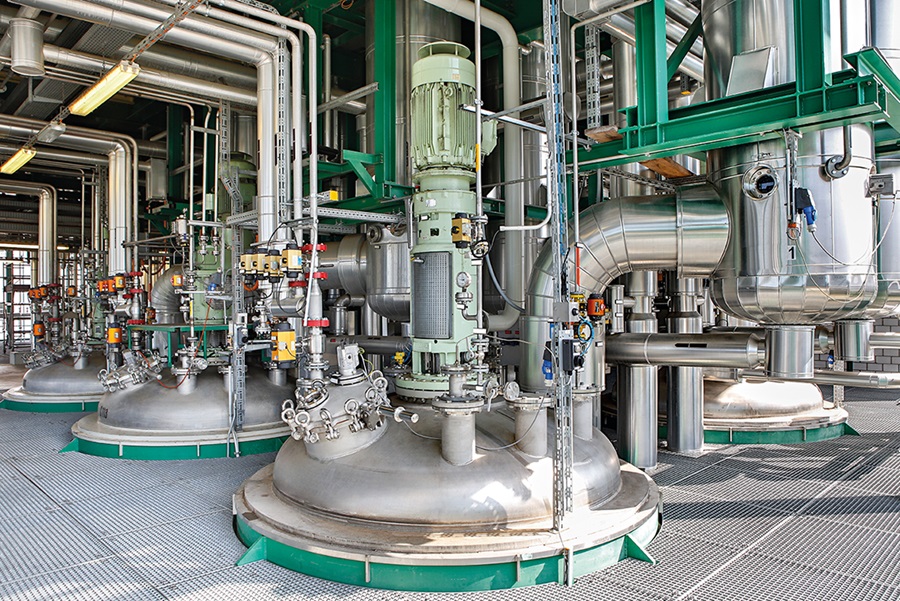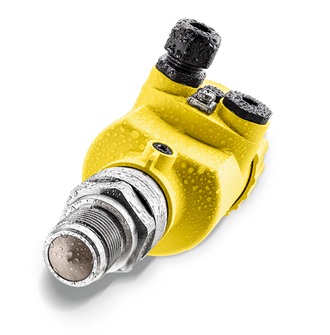Radar sensor VEGAPULS 64 ushers in a new outlook for level measurement in chemical and pharmaceutical applications |
The new radar sensor VEGAPULS 64, with its high signal frequency of 80 GHz, has opened up new options in contactless level measurement applications that were previously considered extremely difficult.
When VEGAPULS 64 was introduced to the market in 2016, even specialists were surprised at how many possibilities this new instrument created. The reaction was the same two years earlier when the first radar transmitter for bulk solids, was launched, which also operates at the same high frequency of 80 GHz.
The crucial difference from previous radar level measuring instruments is the frequency: 80 GHz instead of the usual 26 GHz. This allows a focusing of the radar beam that is more than three times better, which in turn has a whole series of positive effects on the measurement. The very narrow measuring beam has a positive effect not only in applications with numerous tank internals, but also in applications with media that until now could not be readily measured with radar technology due to their poor reflectivity (very low dielectric constant). Even in applications with foam, extremely turbulent product surfaces, condensate or build up on the antenna, the higher measurement certainly now guarantees more reliable measuring results.
Low installation costs
Measuring instrument does not always have to be ‘calibrated’
VEGAPULS 64 is available with different antenna systems and can be used in a wide variety of applications.
However, in many whiskey distilleries the situation is different, the taxable alcohol is accurately measured by compact radar-based instruments from VEGA. These are linearized with specialist tank calibration charts. Before the whiskey is filled into wooden barrels for long-term maturation, it is stored temporarily in stainless steel, securely padlocked spirit vats, which are under ‘customs and excise’ control. Radar sensors are the perfect solution for precise measurement of the quantities in these spirit storage vats.
More security for people and measured values
On the wavelength of small containers
The smallest antenna is no larger than a 1-euro coin. This makes the instrument ideal for installation in small vessels.
Related industries
Export this article
Download as PDFShare this article
Comments ({{comments.length}})
{{getCommentAuthor(comment, "Anonymous")}} {{comment.timestamp | date : "dd.MM.yyyy HH:mm" }}
{{comment.comment}}





